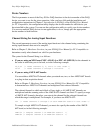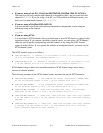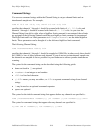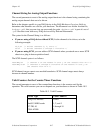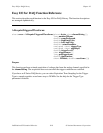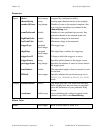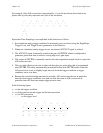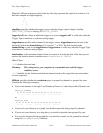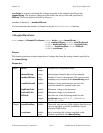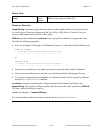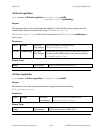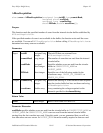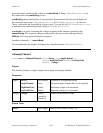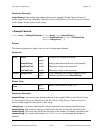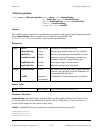
Easy I/O for DAQ Library Chapter 10
LabWindows/CVI Standard Libraries 10-12 © National Instruments Corporation
When the A/D conversions are placed side-by-side, they represent the original waveform as if it
had been sampled at a high frequency.
x
x x
x x
x x
edgeSlope specifies whether the trigger occurs when the trigger signal voltage is leading
(
POSITIVE_SLOPE
) or trailing (
NEGATIVE_SLOPE
).
triggerLevelV the voltage at which the trigger is to occur. triggerLevelV is valid only when the
Trigger Type is hardware or software analog trigger.
triggerSource specifies which channel is the trigger source. triggerSource must be one of the
channels listed in the channelString. Or if you pass "" or NUL, the first channel in the
channelString is used as the triggerSource. triggerSource is valid only when the Trigger Type
is hardware or software analog trigger.
timeLimitsec is the maximum length of time in seconds to wait for the data. If the time you set
expires, the function returns a timeout error (
timeOutErr
=
-10800
).
Other Values:
-2.0
disables the time limit.
Warning: This setting leaves your computer in a suspended state until the trigger
condition occurs.
-1.0
(default) lets the function calculate the timeout based on the acquisition rate and number
of scans requested.
fillMode specifies whether the waveforms array is grouped by channels or grouped by scans.
Consider the following examples:
• If you scan channels A through C and Number of Scans is 5, then the possible fill modes are:
GROUP_BY_CHANNEL
A1 A2 A3 A4 A5 B1 B2 B3 B4 B5 C1 C2 C3 C4 C5
\----------/ \----------/ \----------/
or
GROUP_BY_SCAN
A1 B1 C1 A2 B2 C2 A3 B3 C3 A4 B4 C4 A5 B5 C5
\----/ \----/ \----/ \----/ \----/
• If you are to pass the array to a graph, you should acquire the data grouped by channel.
• If you are to pass the array to a strip chart, you should acquire the data grouped by scan.
• You can also acquire the data grouped by scan and later reorder it to be grouped by channel
using the
GroupByChannel
function.



